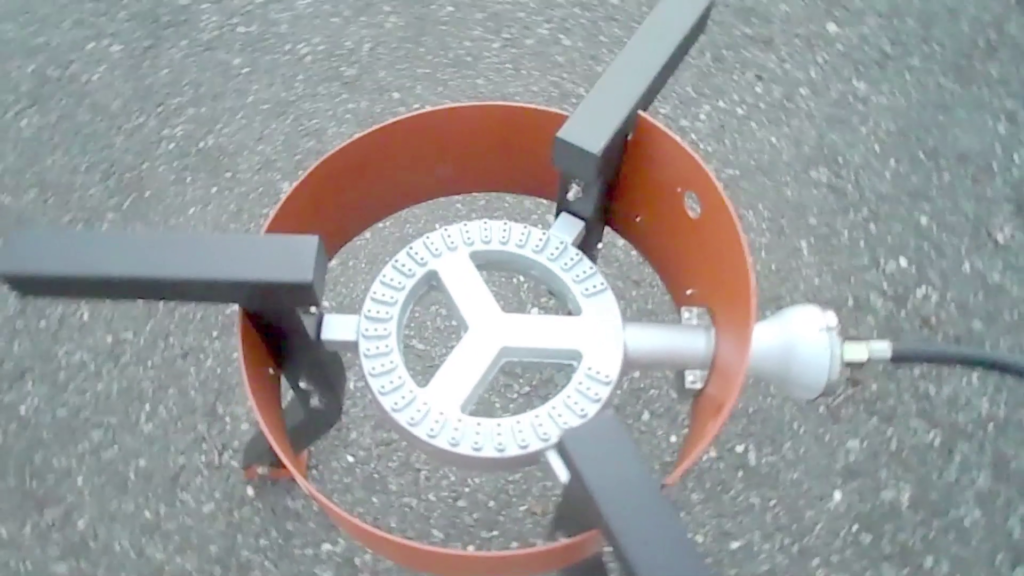 This review is by Homebrew Finds Contributor Brad Probert. Brad is an engineer, expert homebrewer and experienced reviewer. Grab a link to Brad’s website at the end of this review.
This review is by Homebrew Finds Contributor Brad Probert. Brad is an engineer, expert homebrewer and experienced reviewer. Grab a link to Brad’s website at the end of this review.
Spike+ Custom Boil Kettle
Have you ever stood and looked at a friend’s brew rig and thought, “That’s genius! I should do that”? Or stood and looked at your own brew rig and thought, “If I could only have another port there, that would solve my problem with _______”? After using different systems, I found myself with a list of features I loved, and had an idea of the ideal set-up for me. But these ideas never went anywhere because I didn’t have the right skills to build it myself.
Spike offers a solution to this problem, with their Custom Kettle service. And they do it at a competitive pricing to DIY, but with professional quality (not knocking your welding skills- they’re great…). When designing a custom kettle, 1/2″ threaded ports are added at $30 a pop and Tri-Clamp (TC) ports are $50 each. Compare this price to $25 for a weldless TC fitting + $20 for a carbide bit hole saw. And with that weldless fitting you don’t have the smooth sanitary weld surface that’s easy to clean and keep free of beer-souring bacteria. Not to mention the heart stress induced by drilling a hole into the side of your stainless kettle, hoping you’re not going to let the drill slip!
Compare Prices, Review Continues Below:
To make a custom kettle, you can either have your own specific design in mind, or you can have a general idea and work with their engineer to detail it. By doing this, you have the benefit of working with someone that has the experience of having built a lot of custom kettles to help guide you through the process.
 Custom Boil Kettle Drawing
Custom Boil Kettle Drawing
Once the drawing for your kettles is determined, your project is transferred to the person that will coordinate the build of your kettle and help you with any accessories you want to add to your order. Once the kettle is built, they box it up with your accessories and ship it out together.
Spike features two types of kettles, differentiated by the types of weld ports. They have traditional 1/2″ NPT threaded ports (full or half thread), and also 1.5” or 2” TC ports. They’ll even mix and match if you want with some of the fittings NPT and some TC on the same kettle.
Hands on Review
This trial started with the creation process. I had a solid idea of what I wanted. I needed a boil kettle to use with an electrical element to heat strike water, use as a RIMS device for mash step temperatures, and for the boil. I knew most of what I wanted, but was undecided on a couple aspects. So through a series of back and forth questions and answers, I was able to hone in on how I wanted it configured.
The engineer working with me to finalize the kettle port layout was responsive and we exchanged emails daily for a few days until it was settled and I had agreed to the kettle drawings. When I was handed off to the Customer Service contact, she was equally as responsive, and we exchanged a few emails a couple times a day until we had the full order detailed. Five days later I got an email with the FedEx tracking number as it was all being shipped to me. I was amazed at how fast the whole process went.
The 15-gallon Boil Kettle configuration had three 1.5” TC flange ports and one 1/2″ NPT port. I had a TC fitting down low (2” up from the bottom) for the outlet drain, and another TC fitting also at 2” up from the bottom for my electric heating element. This required about 3 gallons of wort to completely cover the heating element. At 4” up, I had a TC fitting for a temperature probe. This required just over 4 gallons of wort to keep it submerged. The 1/2″ threaded fitting was up high on the kettle, 1.5” down from the top flange. To this I fitted a whirlpool recirculation tube from NorCal Brewing Solutions.
The kettle quality was top-notch. Heavy gauge steel walls were straight and true, and the extra-thick bottom helped provide a solid base to keep things stable. The purpose of the thick base is to make it induction heat compatible or help more evenly distribute the heat from a gas burner flame, but it also helped make the pot feel secure sitting on a brew table full of hot wort. The finish on the outside was a bit shinier to look more impressive when showing off to your friends, and the inside was a bit more brushed so the inevitable markings of multiple batches of boiling wort isn’t as noticeable. Both sides cleaned up really easily with hot water and a scrubbing sponge. I only had to use cleaning products prior to its virgin voyage to ensure all the machining oils were cleaned off.
The weld quality was superb. The NPT port was clean and without any porosity or crevices to make cleaning difficult. The TC flanges were beautiful. The way they were integrated into the walls of the kettle almost looked they were formed/pushed out of the side wall of the kettle rather than welded on. I really can’t overstate how flawless these were.
 Kettle with PIckup Tube, Recirc Tube, 2,250 Watt Element and Temp Probe
Kettle with PIckup Tube, Recirc Tube, 2,250 Watt Element and Temp Probe
 Shorty Pickup Tube
Shorty Pickup Tube
The accessories were all of good quality and reasonably priced. There were two accessories that stood out for me. The first was the short pickup tube to connect to the TC fitting down low on the kettle. This dropped down low to almost touch the bottom of the kettle to ensure the maximum amount of fluid to be extracted. With a slight angular cut on the tube, it built a natural blocking barrier to any trub in the center, and then sloped upwards to ensure it didn’t create a flow restriction problem.
 Spike Brewing Butterfly Valve
Spike Brewing Butterfly Valve
The other accessory that was impressive was the butterfly valve. The price was a bit intimidating, about twice the price of a decent 3-piece ball lock valve. But I was impressed. The heft and quality of this beast was impressive. Being a much more open design than a ball valve, it certainly was easier to clean and know you got everything out. The handle used to open the valve contained a locking mechanism so you could open it to a fixed position and the mechanism kept it locked in position so the flow going through didn’t cause the valve to float or try to close.
All of the TC fittings worked easily and sealed to a fully leak-proof condition with no fiddling required and nothing more than hand torqueing of the clamps- no tools required. The black painted/etched volume markings at every 0.5 gallons were very clear and easy to read while filling the kettle, and I liked how they went down as low as 2 gallons.
The main selling point of the TC fittings is ease of cleaning. I was curious to try this out because I’m not one to be obsessive about cleaning, so I figured I could give it a good critical review. I’ll shortcut to the ending and tell you that even a non-cleanfreak found these to be great. I especially loved the ability to pop the electric heating element out and easily clean it. I scalded the element a couple times so I was thankful at how easy it was to pop this out. The smoothness of the weld on the TC fittings also made cleaning easy without requiring brushes to clean inside threaded fitting grooves.
Conclusions
So overall, this custom kettle service is kind of a hidden gem. The kettles themselves are very high quality, and Spike makes creating your own custom build super-easy and relatively affordable. I was skeptical of the benefits of TC ports before, but now am a firm believer in how they make cleaning so much easier. If you’re in the market for a new kettle and have some ideas of what you might do a little differently, Spike Custom Kettles might be able to hook you up.
Compare Prices, Review Continues Below:
More Reviews!

More Spike Brewing Equipment Reviews
Spike Brewing Equipment Reviews
More Homebrew Finds!
Shop Around… More Kettle Reviews!
Homebrew Reviews: Kettles
More Photos
 Spike Two Vessel Setup
Spike Two Vessel Setup Open Butterfly Valve
Open Butterfly Valve Spike Custom Mash Tun Drawing
Spike Custom Mash Tun Drawing TC Ports Make for Easy Cleaning!
TC Ports Make for Easy Cleaning!
pinned
This post may contain affiliate links. We may make a commission when you use our links. This will never cost you extra. Thank you for supporting Homebrew Finds!
greatdeals
Special Thanks to Spike Brewing Equipment for for providing the unit used for evaluation in this review.
By Brad Probert. Check out Brad’s website – beersnobby.com
review:spikecustkettle tag:tpr













 This review is by Homebrew Finds Contributor Brad Probert. Brad is an engineer, expert homebrewer and experienced reviewer. Grab a link to Brad’s website at the end of this review.
This review is by Homebrew Finds Contributor Brad Probert. Brad is an engineer, expert homebrewer and experienced reviewer. Grab a link to Brad’s website at the end of this review.



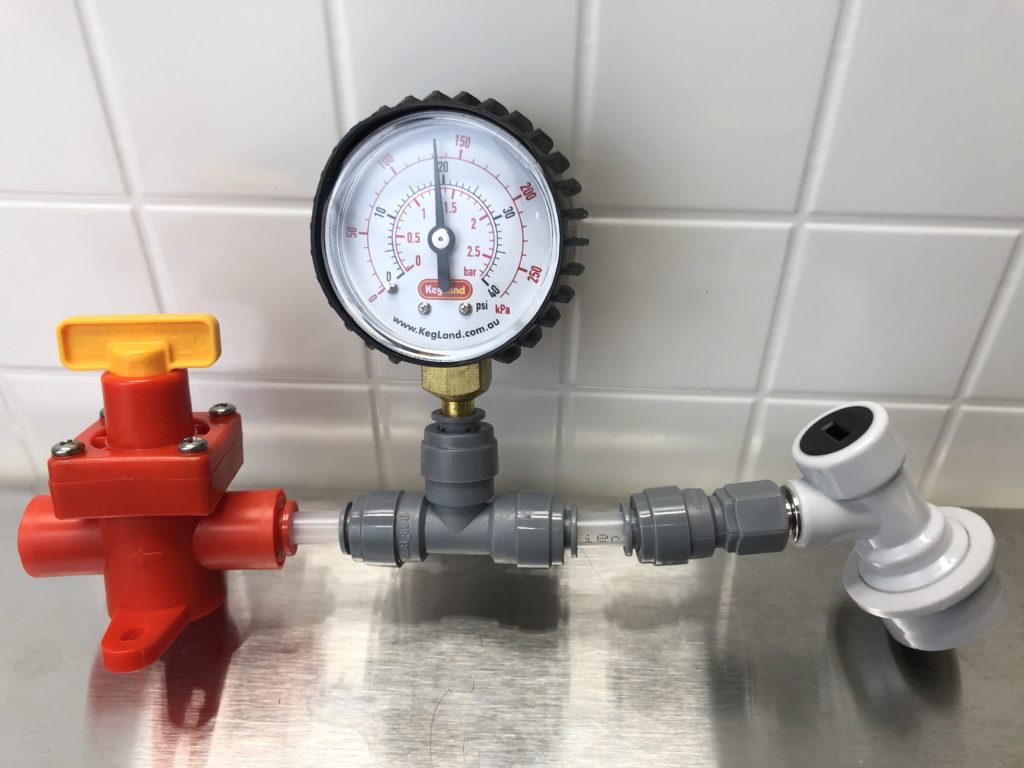 BowTie v1 Assembly
BowTie v1 Assembly BlowTie v1 assembly that has been updated to digital, see below for walk through of that process.
BlowTie v1 assembly that has been updated to digital, see below for walk through of that process. The BlowTie is the heart of this build. It has DuoTight Push to Connect connections on both side as well as an adjustment knob to set pressure. Related:
The BlowTie is the heart of this build. It has DuoTight Push to Connect connections on both side as well as an adjustment knob to set pressure. Related: 
 Sight Glass showing cloudy wort during recirculation
Sight Glass showing cloudy wort during recirculation Sight Glass showing clear wort during recirculation
Sight Glass showing clear wort during recirculation

 Connected to a RIMS Controller and Mash Tun
Connected to a RIMS Controller and Mash Tun Smooth Machined Inside of Housing
Smooth Machined Inside of Housing
 Plot of Cooling System Performance
Plot of Cooling System Performance
 Flex Fermentor [
Flex Fermentor [


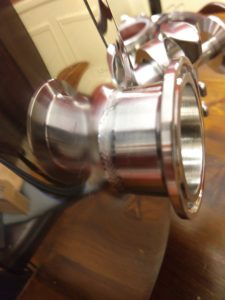
 TC Flange Seamless Surface in Contact with Beer
TC Flange Seamless Surface in Contact with Beer Polished Interior with Etched Volume Mark
Polished Interior with Etched Volume Mark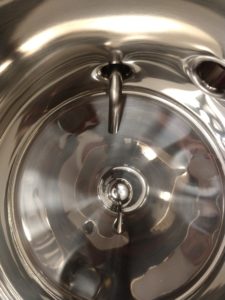 Pickup Tube Rotated Down into Cone
Pickup Tube Rotated Down into Cone Lid Clamped on with Seal Visible
Lid Clamped on with Seal Visible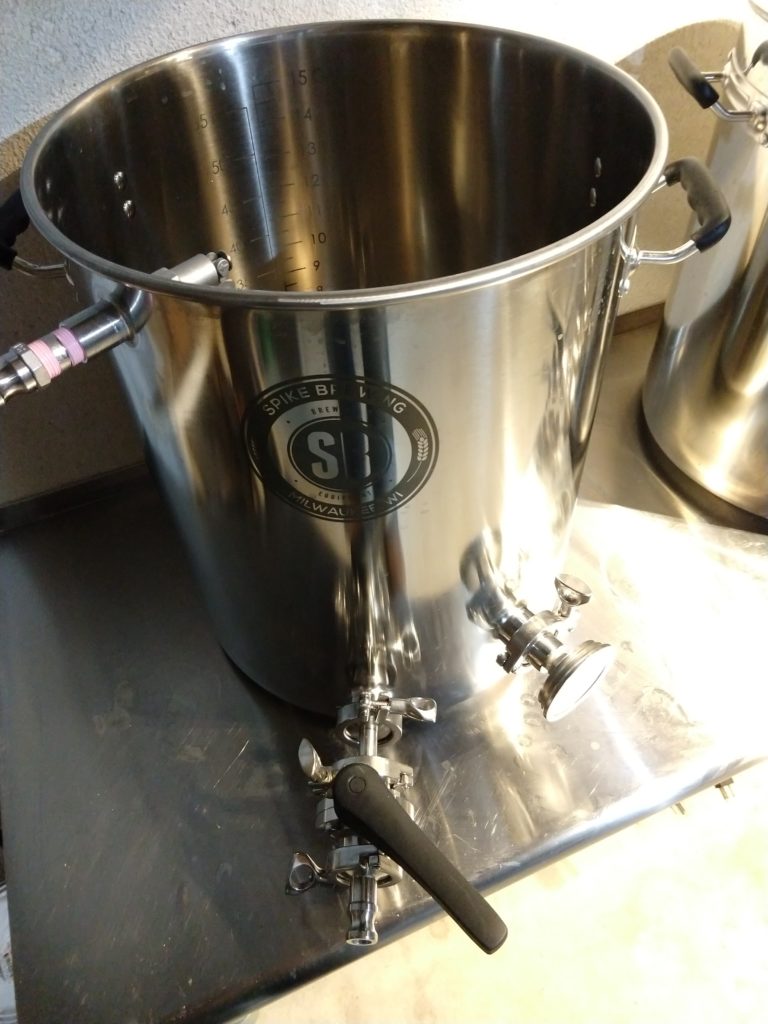 This review is by Homebrew Finds Contributor Brad Probert. Brad is an engineer, expert homebrewer and experienced reviewer. Grab a link to Brad’s website at the end of this review.
This review is by Homebrew Finds Contributor Brad Probert. Brad is an engineer, expert homebrewer and experienced reviewer. Grab a link to Brad’s website at the end of this review.
 Custom Boil Kettle Drawing
Custom Boil Kettle Drawing Kettle with PIckup Tube, Recirc Tube, 2,250 Watt Element and Temp Probe
Kettle with PIckup Tube, Recirc Tube, 2,250 Watt Element and Temp Probe Shorty Pickup Tube
Shorty Pickup Tube Spike Brewing Butterfly Valve
Spike Brewing Butterfly Valve
 Spike Two Vessel Setup
Spike Two Vessel Setup
 Spike Custom Mash Tun Drawing
Spike Custom Mash Tun Drawing TC Ports Make for Easy Cleaning!
TC Ports Make for Easy Cleaning!